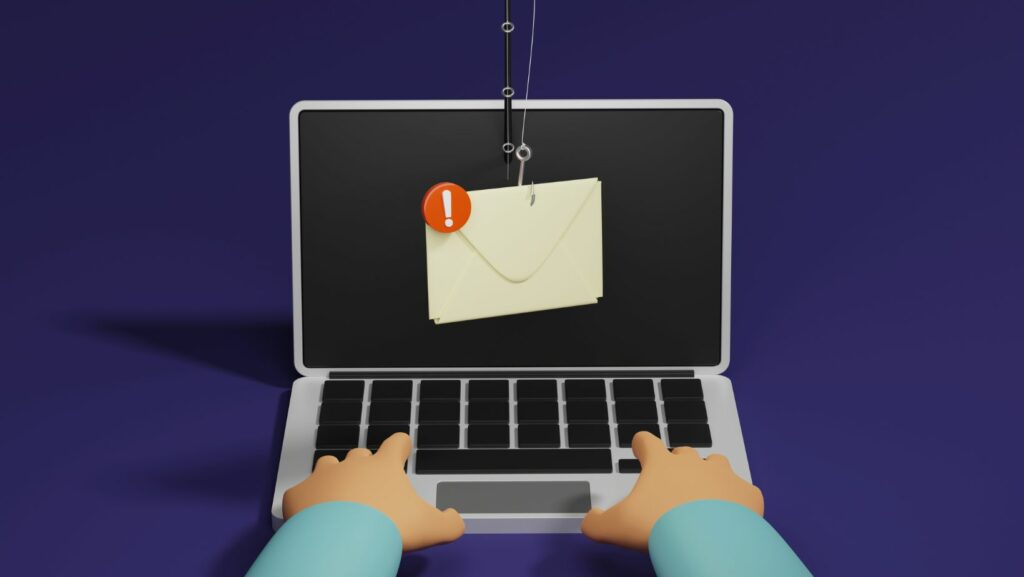Most web browsers can detect phishing sites and will warn you when you click on a link that is known to be malicious. Ensure you regularly update your browser software and enable malware protection. Be wary of emails from unknown senders, and always contact them directly (on the phone if possible). It is also good to remember that no reputable company will ask for your password or other personal information over email.
Don’t Click on Links
Phishing attacks aim to steal personal information, such as passwords and bank account credentials. After attackers gain access to your account, they can use it for malicious purposes or sell your information on the black market. This is why it is best to only click on links you are sure about. This is an easy cybersecurity best practice that will protect your device and your personal information. Even though new phishing attack methods are constantly developed, a trained eye can spot some common characteristics. For example, if the message contains misspellings or bad grammar, it could indicate that it was automatically generated for a phishing attack.
Another thing to look for is the website URL where you are being redirected. Check if it starts with HTTPS, indicating the website is secure. If you need clarification on the link, hover your mouse over it to show the actual web address. This will help you determine if the email is legitimate or not.
Don’t Provide Personal Information
Suppose you get a request via email, text message, or phone call asking for personal information, especially passwords, PINs, 2FA codes, bank account numbers, and Social Security Numbers. In that case, it is best to refrain from responding.

Scam artists can use phishing sites that look exactly like the real thing, including a fake padlock icon in the browser or a website URL that does not begin with “https.” Email addresses can be spoofed to appear as being from a colleague or trusted friend. More sophisticated phishing attacks, known as spear phishing, use personally identifiable information gathered from social media or the compromised accounts of people you know to make their messages more convincing.
Some phishing attacks involve sending attachments that contain malware, such as ransomware, viruses, and keyloggers. If you open these attachments, the crooks can access your computer and use it to send spam, perform other malicious actions, or even host their phishing attacks. To protect against malware, you should avoid clicking on links in emails and text messages and ensure your browser and Internet security software are updated regularly.
Don’t Open Attachments
Email attachments are dangerous because they contain malware, viruses, ransomware, and keyloggers. Only open attachments if you can confirm they come from the sender. This is especially true for attachments containing text or code that will be interpreted by a program, such as.pdf or.rtf files, Microsoft Office files (like.doc,.docx,.xls, and.xlsx), jar files, ZIP or RAR files, disk image files (.img,.iso, and.dmg), and script or batch files (.bat,.cmd, and. sh). Attackers often use fear and a sense of urgency to trick users into opening malicious attachments, so be suspicious even if the message is from someone you trust. Additionally, attackers may spoof emails (new window) to make them look like they came from your internet service provider or software vendor and claim that they contain patches or new versions of their products.
Don’t Click on Links in Emails
Often, cybercriminals hide malware within an email attachment or disguise a link to a malicious website as a legitimate hyperlink. By clicking these links, a victim may inadvertently install malware on their computer or unwittingly hand over confidential data such as credit card details.

These phishing attacks are designed to overcome the victims’ better judgment under the guise of someone they trust or who plays on fear (as seen in this phishing message trying to extort money or information from unsuspecting recipients). The subject lines and sender names also often indicate that the message is a phishing attack, especially if they’re sent from questionable accounts or addressed to large groups of people.
Similarly, avoiding clicking on suspicious pop-ups is essential, as attackers will often change the location of the “x” button in a pop-up window to fool users. The best defense is to use ad-blocking software and ensure all browser windows have it enabled. In addition, if an email seems to come from someone you don’t know or that is out of character, it’s best not to click on the links at all and instead contact them directly via telephone or in person.
Don’t Click on Links in Text Messages
A phishing attack could come via your email, instant messaging app, or mobile device. While email remains the focus of attackers, the rise of mobile messaging apps like Facebook Messenger and WhatsApp has provided phishers with a new vector to target their victims. Smishing messages often purport to be from your bank and request that you click on a link to “update your payment method.” This can lead to a malicious website designed to mimic a reputable online banking site or even a fake PayPal page that asks you to enter sensitive information. Providing this information is equivalent to handing thieves the keys to your bank account. The good news is that phishing attacks are rife with red flags that anyone can spot if they take the time to read an email with a critical eye and use a little common sense. The best action is to use a spam filter and install antivirus protection on your computer. Then, change passwords regularly to reduce an attacker’s window of opportunity and enable two-factor authentication (2FA) on your accounts.


More Stories
Progressive Slot Machine Strategy: Key Techniques for Big Wins
The Evolution of Augmented Reality (AR) in Gaming: A New Frontier
Image Annotation Services for Autonomous Vehicles